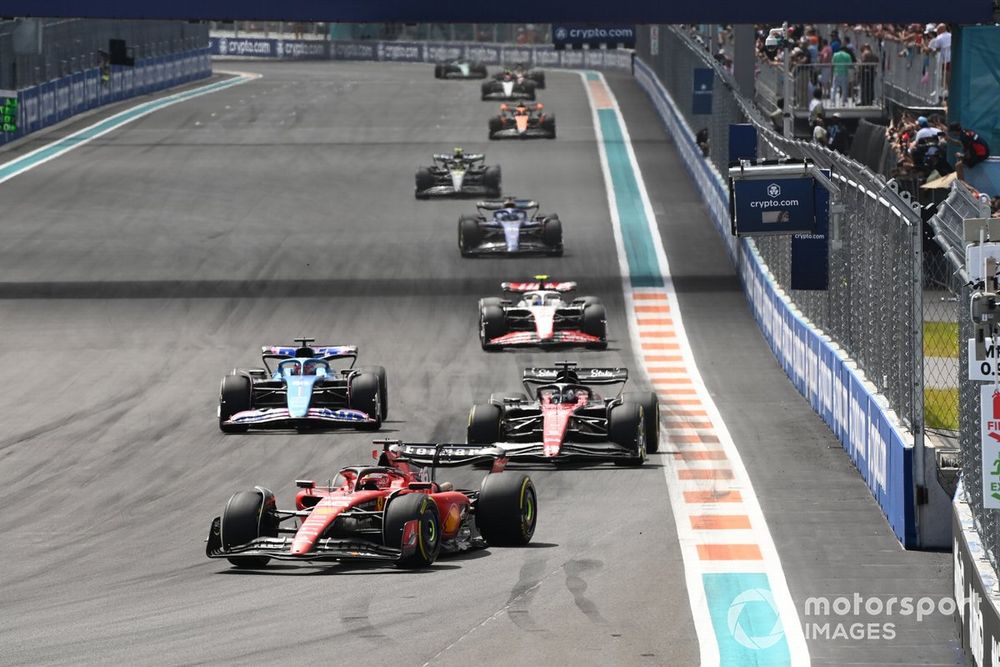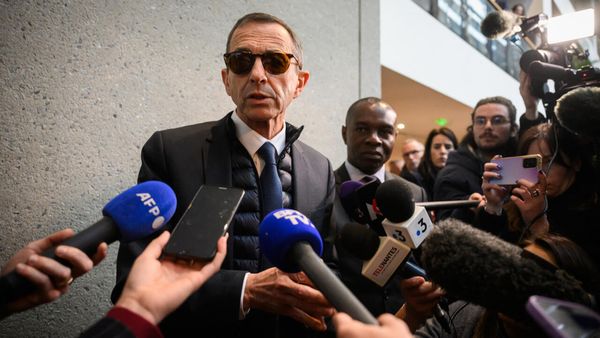
But as personnel embrace an unexpected free weekend, instead of what was going to be the start of a punishing triple-header, it is wrong to think teams can put their competitive thoughts on hold for another few days.
The sudden change in schedule prompted by Imola not taking place triggers a fair few consequences and complications for everyone, which will likely prompt some discussions in team factories this week.
Here is a look at some of the main factors at play.
The sudden upgrade dilemma
The start of the European season at Imola was going to be the perfect spot for teams to introduce major upgrades that they have been working on for several months.
There had been much hype around Mercedes’ plans, with it set to introduce new sidepod, floor and front suspension on the W14 to help lift the fortunes of Lewis Hamilton and George Russell.
But elsewhere on the grid, Ferrari had originally planned new rear suspension, AlphaTauri was bringing a new floor and Alfa Romeo was pushing for some major tweaks to its car to get it back in the fight for points.
With the Imola weekend looking like a washout even before the extent of the flooding became clear, Ferrari had already shelved its plan to run with the rear suspension – as it felt it would be better to wait now until the Spanish Grand Prix next month.
However, for the other squads, the loss of Imola will prompt some discussions now about the exact timing of when they bring their upgrades.
The next race at Monaco is unique, with the tight and twisty street circuit not the ideal venue for delivering feedback on aero and handling improvements brought by car changes.
It also delivers a much greater risk of accidents, which could destroy new parts and leave teams on the back foot for weeks to come.
Engineers will need to consider over the next few days whether to commit to the upgrades coming to Monaco – and if the parts are quicker then it makes no sense to wait – or holding fire for one more weekend until Spain.

What next for F1’s new tyre allocation and qualifying test
The Imola weekend was supposed to mark the first trial of new tyre allocation rules aimed at improving sustainability in F1. The reduction in sets available for drivers (from 13 to 11), plus a shift in the compounds allocated, looked set to shake things up.
As well as drivers being forced to use specific compounds in qualifying – the hard in Q1, the medium in Q2 and the soft in Q3 – the rules had been aimed at ensuring teams were left with more race option sets too, which should have helped to open up strategy possibilities.
The cancellation of the Emilia Romagna race means that the first test of the new tyre rules will now take place at the Hungarian Grand Prix, shortly before the summer break. The Hungaroring had always been slotted in as the second venue to test it.
However, Imola's loss does not mean that F1 will definitely only get one chance to try the new rule idea out, and it is likely that discussions will take place between Pirelli, the teams and the FIA about whether or not there should be another opportunity slotted in later on too.
The sporting regulations for 2023 are clear that, what is known as the Alternative Tyre Allocation (ATA), can take place at ‘up to’ two events. With Imola not happening at all, then the door is open for a venue beyond Hungary if there is interest.
How will engine/gearbox allocations be influenced?

There was a time when F1’s regulations offered extra power unit availability if the F1 calendar exceeded a certain number of races.
But that was eventually weeded out because of concerns about unintended financial consequences that manufacturers and customers could face if one extra race suddenly forced everyone to need an extra power unit.
Now the engine allocation for power units is set for the entire season – so the cancellation of the Imola event will have no impact on the various components teams are allowed (and which was increased recently anyway because of the extra strain triggered by sprint race qualifying).
There is a race numbers limit for gearboxes though, as their use can be opened up if F1 hits a certain number of races.
For 2023, however, the trigger to allow teams to run five gearbox cases, cassettes and other components is set at 24 races, so what has happened with Imola has zero impact in terms of casting doubt on how many parts can be used. Teams will have four available for the current season.
The cost cap implications of losing a race

For a lot of teams, operating under the Formula 1 cost cap can be quite a challenge – and they face some frequent headaches about making sure they don’t accidentally bust the limit.
As Mercedes boss Toto Wolff once said: “If you’re overshooting, every £10,000 matters.”
So, with the level of the cost cap being based on the number of races in the season, on the face of it losing the Emilia Romagna Grand Prix could pose a bit of problem for teams if they were right on the limit.
With teams getting $135 million for 21 races, and an extra $1.2 million for each extra race beyond that, a 23-race calendar with Imola is worth $137.4 million whereas a 22-race calendar without it means a $136.2 million limit.
However, F1 rules have made allowances for the possibility of late calendar changes throwing a spanner in teams’ budget preparations.
The Financial Regulations state that a race will be counted for the final tally if it is cancelled less than three months prior to the proposed start of the competition.
It means teams will still run to the same basic $137.4 million limit as if Imola had happened.
The impact on F1’s commercial rights income

While the introduction of F1’s cost cap has helped bring team budgets under control, and means they are no longer regularly fighting for survival, it does not mean that they don’t care about profits.
So, with a decent share of F1’s revenue coming from race hosting fees, the cancellation of any race could have a consequence on their earnings at the end of the year.
The manner by which Imola was dropped, with force majeure triggering the cancellation, means that Emilia Romagna race promoters will not be forced to still pay out their fee for this year. This is understood to be around $20 million.
With teams taking a share of F1’s overall profits of the year, the loss of the race will therefore result in them receiving less overall than perhaps they would have anticipated. However, it will be a relatively small amount in the grand scheme of things – and will be slightly offset by some reduced costs in terms of car running expenses and mileage not being used over the Imola weekend.







